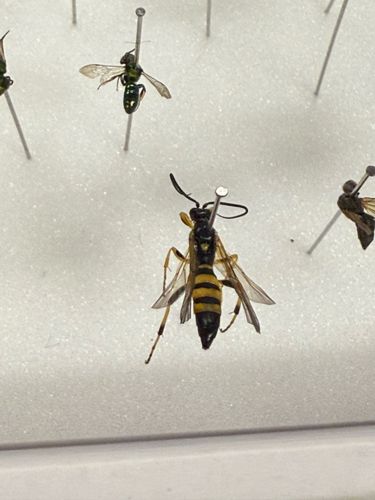Sawfly
Scientific Name: Tenthredinidae (or similar family within Symphyta)
Order & Family: Order Hymenoptera, Family Tenthredinidae (common sawflies)
Size: Typically ranges from 3 mm to 20 mm in length, depending on the species. The specimen in the image appears to be on the larger side of this range.

Natural Habitat
Sawflies are found in a variety of habitats, including forests, woodlands, meadows, gardens, and agricultural areas. Their presence is often tied to the host plants their larvae feed on.
Diet & Feeding
Adult sawflies primarily feed on nectar, pollen, or sometimes honeydew. Larvae are typically herbivorous, feeding on the leaves, needles, or stems of a wide variety of plants, including trees, shrubs, and herbaceous plants. Some species are gall-formers or wood-borers.
Behavior Patterns
Sawflies undergo complete metamorphosis (egg, larva, pupa, adult). The larvae are often caterpillar-like in appearance but have more than five pairs of prolegs (fleshy, stubby legs on the abdomen) unlike butterfly or moth caterpillars. Adults are often seen flying near their host plants during specific periods in the spring and summer. Unlike bees or wasps, sawflies do not sting.
Risks & Benefits
Risks: Larval sawflies can be significant defoliators of trees and other plants, causing economic damage in forestry and agriculture, and aesthetic damage in gardens. Benefits: As larvae, they serve as a food source for other insects, birds, and small mammals. Adults can contribute to pollination when feeding on nectar and pollen, though they are not as efficient as bees.
Identified on: 9/19/2025